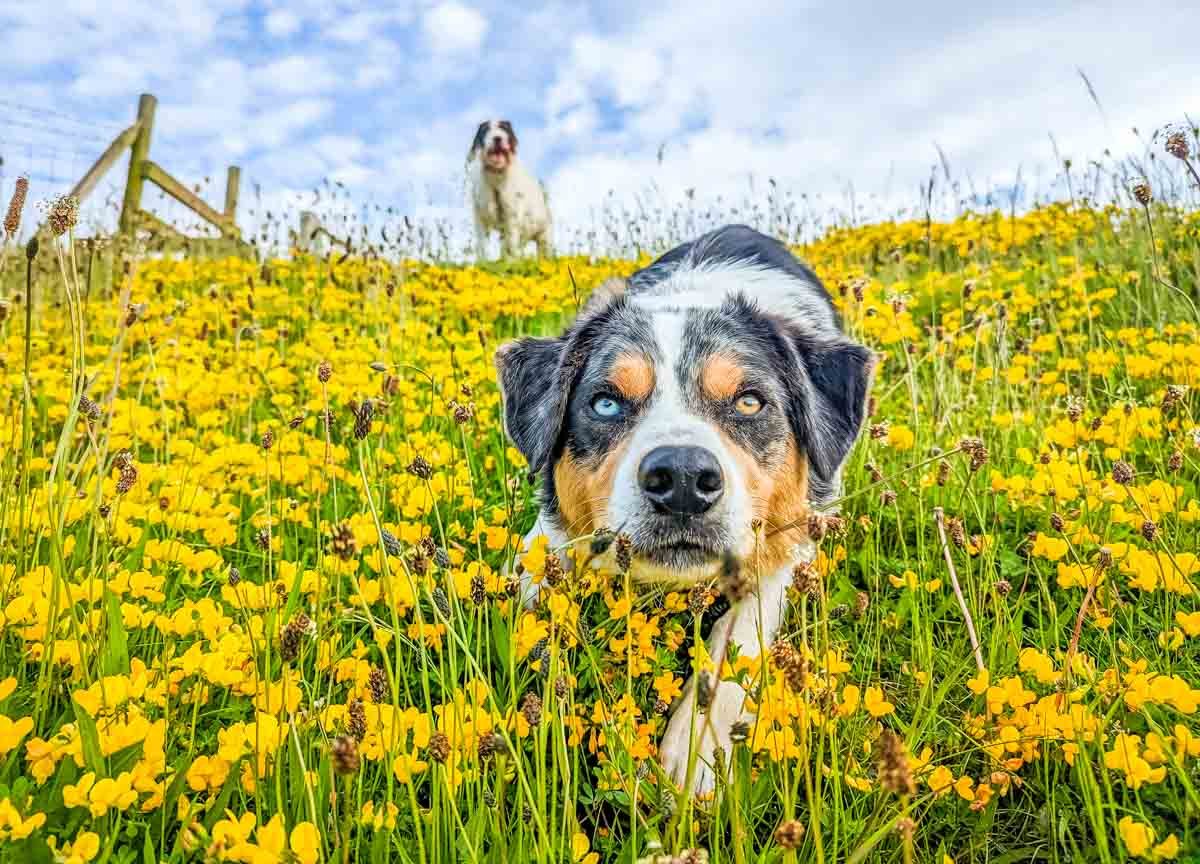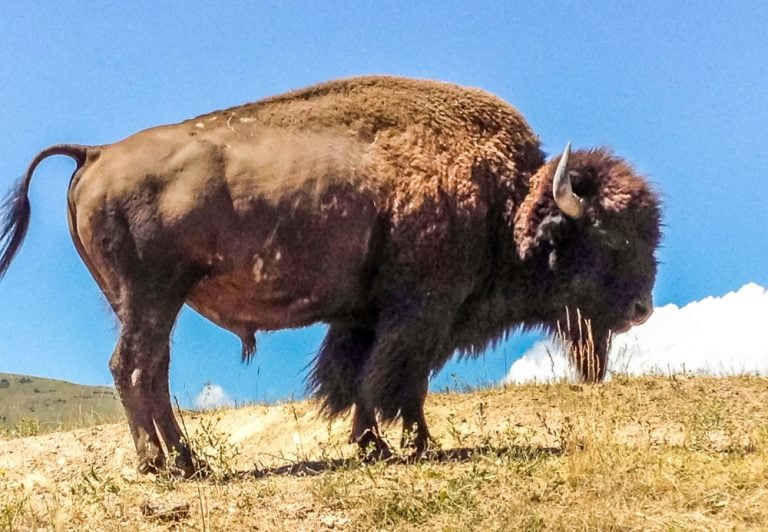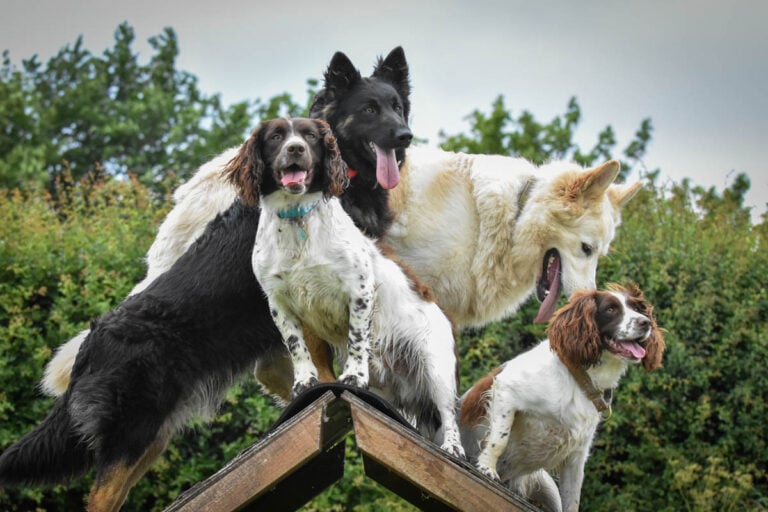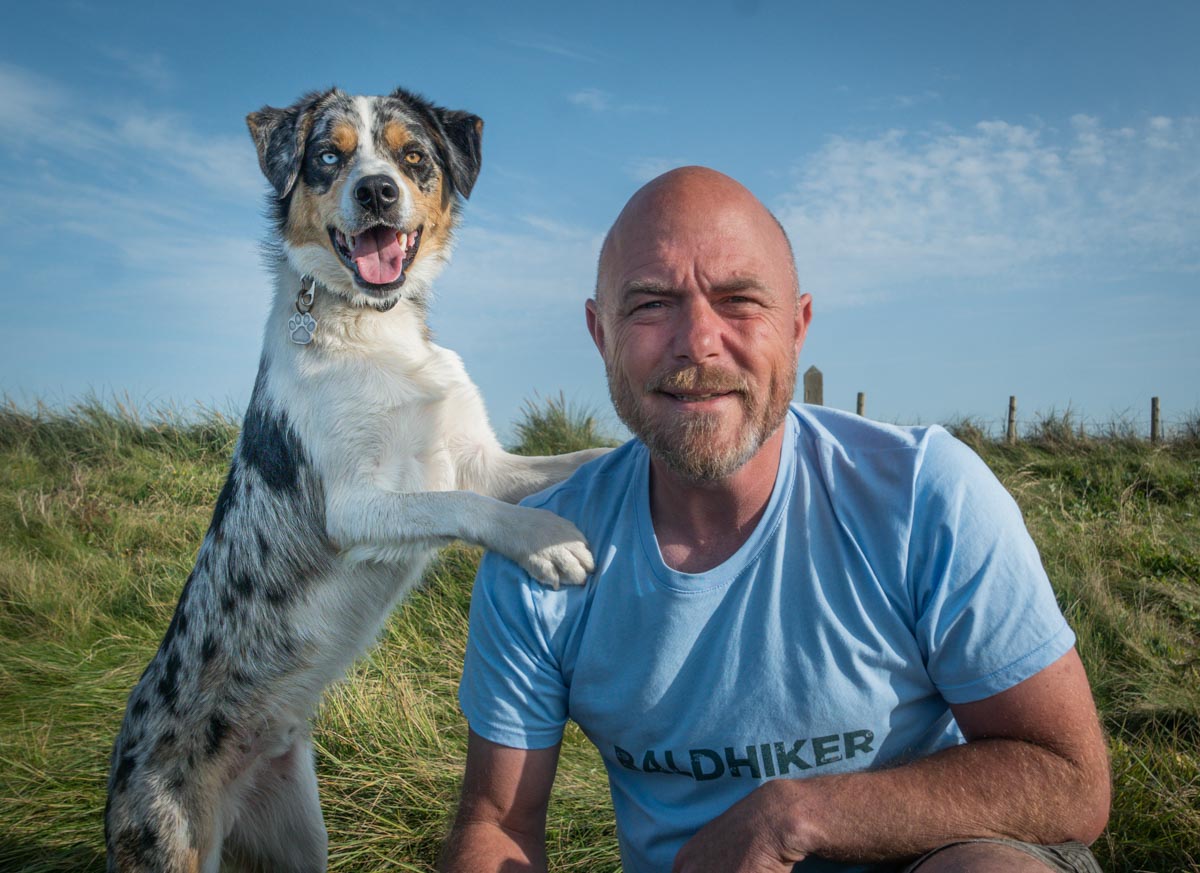Summer, a time for enjoying the warmth and getting outdoors, and enjoying quality time with our dogs. No fear of getting wet or cold, long days to take adventures with our 4 legged friends.
The way we react to and cope with warm weather though is extremely different to how our dogs react and cope.
Dogs have different biological mechanisms to cope with heat that are inferior to ours, but their love of being part of our pack and joining us in all we do can make them go too far, potentially damaging their health, sometimes to the point of fatality. We sure don’t want that.
I love to walk and love walking with my 4 legged companions, but there are certain temperatures and weather conditions that narrow down my options so that I can care for my dogs needs whilst on our adventures.
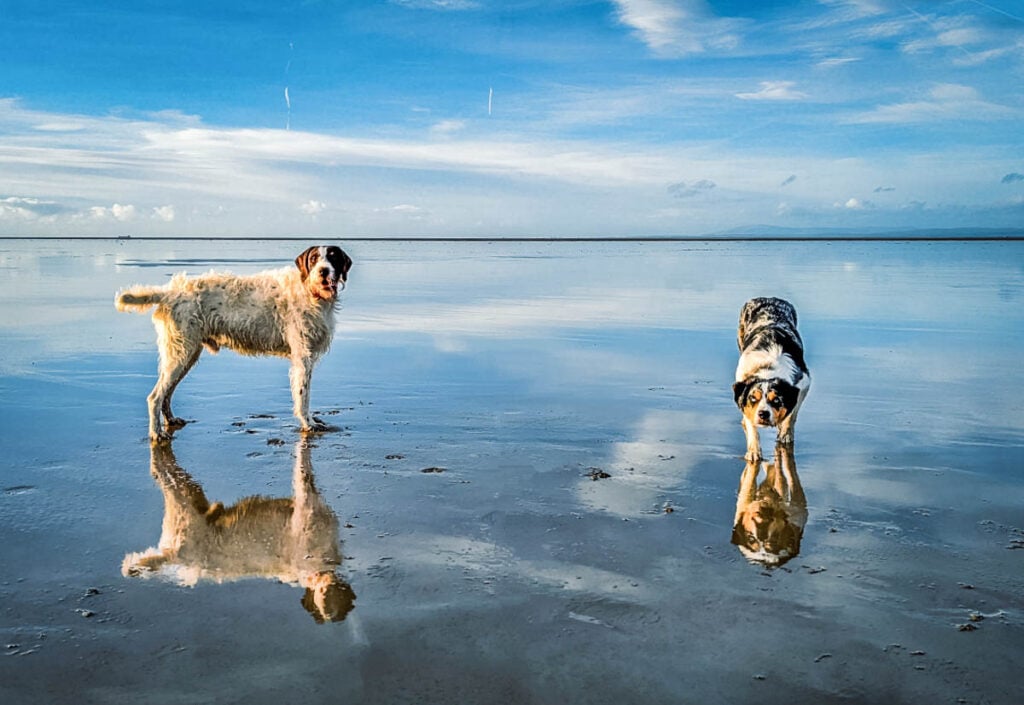
How Do Dogs Regulate Body Temperature?
We humans have a wonderful thing called sweat to help regulate our body temperature. When we start getting too hot, we sweat. We then go through a biological process called vapourisation. In short, this is where the excess energy (heat) in our body is used to evaporate that sweat which then helps cool us down.
For dogs there is one problem: they do not sweat through their skin like us and only sweat through their paw pads and ear canals. That is hardly going to work for them.
All of us know the first sign of a dog being hot: a lot of panting! When we do a hard workout at the gym and get hot, we sweat a lot. When a dog does a hard workout and gets hot, they pant…a lot.
To get a little biologically technical, the major blood vessel in a dog’s face is to the front near the nose, so panting helps spread some coolness through the body from the upper respiratory tract. This also evaporates hot liquid from the membranes, but then even more water is needed to replenish it.
Some breeds or types will struggle even more to regulate their body temperature with panting which I shall discuss later on.
A dog will also have the want to seek a breeze or shade to help regulate their body temperature.
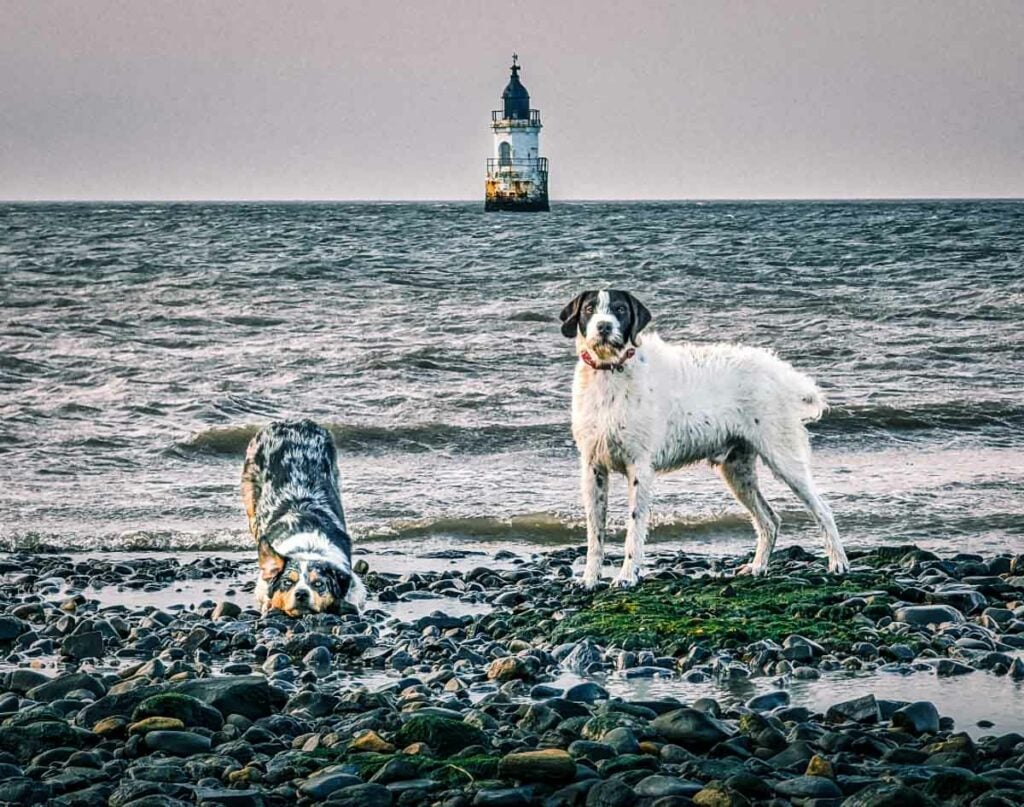
Flat Faced Dogs
Flat faced (brachycephalic) dogs are much more liable to heatstroke than longer muzzled dogs. Over the years we have created dog breeds that have had a negative affect on their capacity to cool down.
Research has shown that, for instance, an English Bulldog is more likely to have a heat related illness than a Labrador.
Other examples of breeds that suffer more are pugs, french bulldogs, and boxers. You get the idea: dogs with shortened snouts will have smaller airways and, thus, more problems.
This restriction of airways really does affect the dogs ability to cool down when panting. Flat faced dogs need a lot of extra care when in the heat.
Double Coated Dogs
If you have a double coated dog you should avoid the temptation to shave them in the summer. Examples of double coated dogs are border collies, like my Malc, huskies, newfoundlands, and labrador retrievers. There are many breeds that are double coated actually, and many are working dogs that were bred with a purpose.
The outer coat that we see is used to protect against ice, snow and often to repel water in wet and cold conditions.
They have an inner, softer coat that keeps them warm and dry in winter. This coat often sheds by itself in warmer seasons (my carpet and vacuum are well acquainted). This is nature allowing air to circulate naturally through the outer coat and onto the skin to help cool it down.
If you shave the hair from a double coated dog you can damage both the hair and coat.
On single coated dogs the hair will grow back as ours does and perhaps keep on growing. But on double coats it is naturally designed to grow to a certain length and stay there, naturally regulating itself for the temperatures. This process can be severely damaged by shaving.
Heatstroke In Dogs
Heatstroke is a serious condition in dogs that can happen way faster than even for us humans.
Just some of the symptoms of heatstroke in dogs are:
- Excessive panting even when not moving
- Drooling and dribbling
- Unwillingness to move
- Confusion
- Vomiting
- Collapsing
- Having fits
- Diarrhoea
- Uncoordinated
There is a conception that people leaving their dogs in hot cars or buildings are the most common causes of heatstroke in dogs but, no, that only makes up around 8% of cases. In fact, 75% of heatstroke cases in dogs come from exercising dogs on hot days.
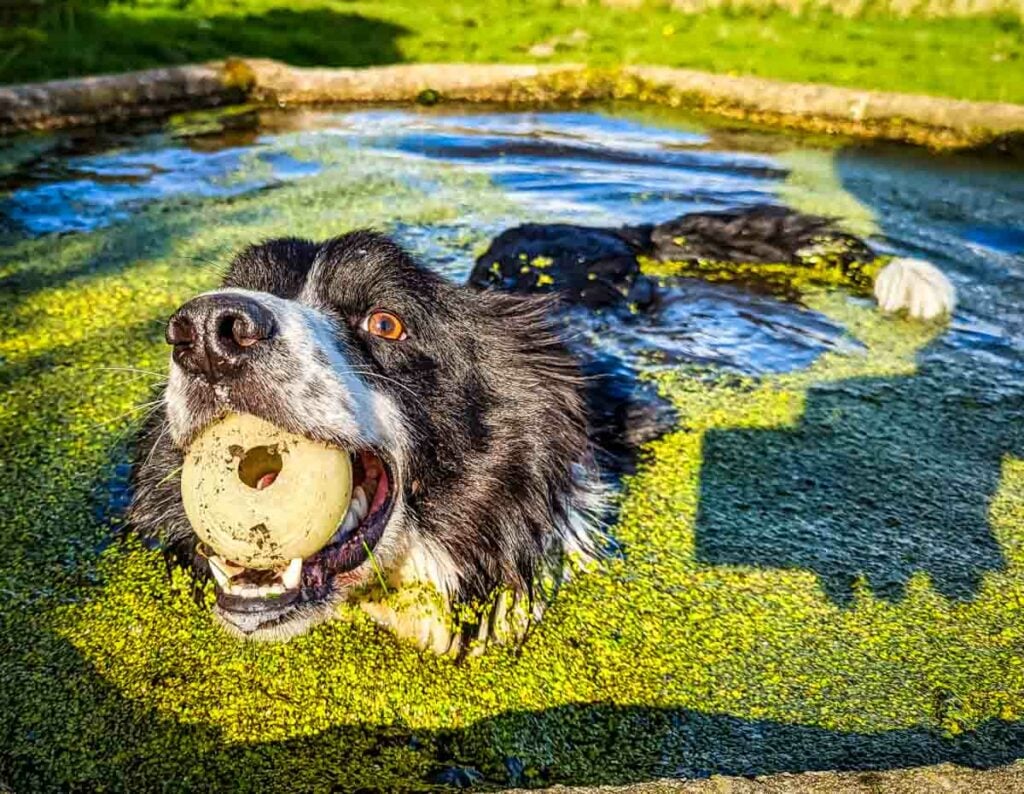
If You Suspect Your Dog Has Heatstroke
It goes without saying that contacting your vet immediately is the best course of action. But some immediate actions you can take are to:
- Get your dog to a cool place, preferably with a breeze
- Stand the dog with paws in cool water
- Wet the coat with cool, not freezing water
- Give water but do not let them gulp lots
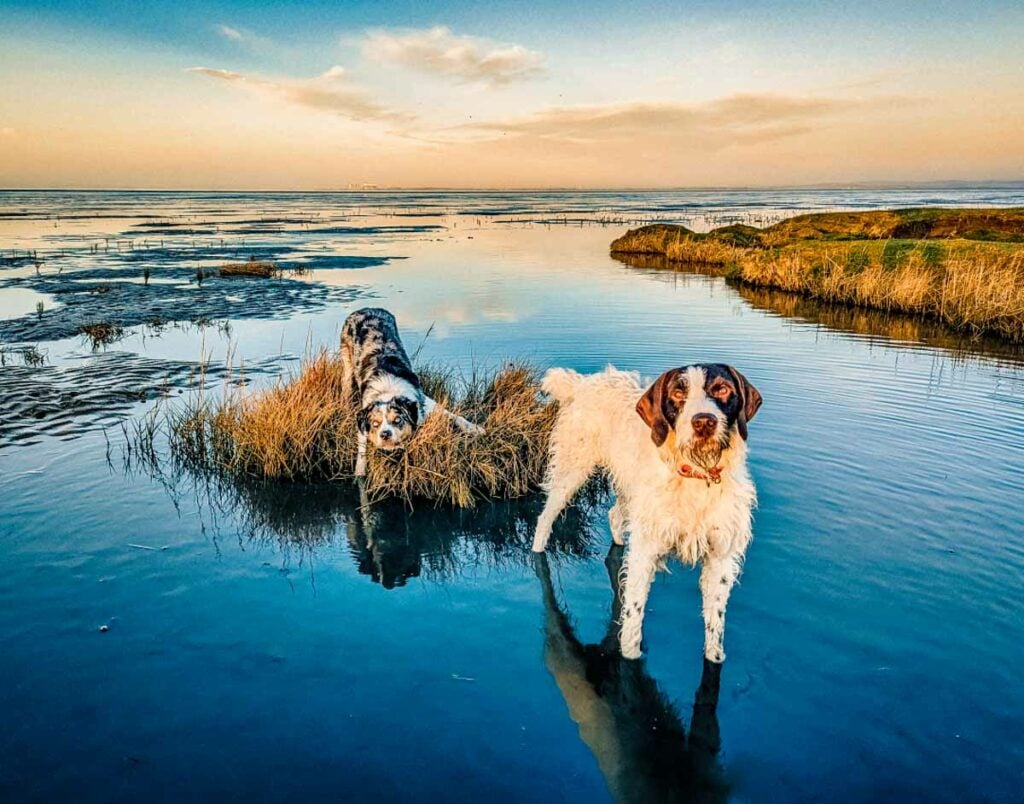
Inside Hot Cars
Before we even start about being out in the sun on long walks, we must discuss the issue of dogs in hot cars.
We have all been there. We park our cars in the supermarket car park on a warm sunny day. We spend even just 20 minutes shopping and then as we get into our cars we find it very uncomfortable ourselves. Imagine being a dog that has had to sit in that greenhouse type effect for those 20 minutes and is unable to sweat.
When the temperatures rise above 20 Celsius the windows of a parked car will amplify the heat coming in and the car will retain that heat. That is why it gets uncomfortable even for us when we return. That temperature inside easily reaches 40, and even over 50 degrees Celsius.
Even with the windows open a couple of inches, that is hardly a useful breeze in these temperatures.
If You See A Dog Distressed In A Hot Car
Whenever I see a dog in a car on a hot day it does not always mean distress for the animal. It could be that the owner literally has just left the car and is only going into a shop for 2 minutes to get something.
It could also be a small van that has air conditioning built in for when its parked up.
If you see that a dog is struggling or in distress, and the owner isn’t around, then call 999. The police will advise you what to do or come to the scene. Yes, dogs in distress in hot cars are classed as an emergency.
Do not immediately start breaking into the car. Smashing open a car window vigilante style might seem the best immediate solution but you will get into a whole world of trouble with the police yourself. You will more than likely face criminal damage charges.
If the police tell you to do it then that is a different matter. Virtually all of us have smartphones with cameras so we can take videos and pictures to help the decisions of emergency services.
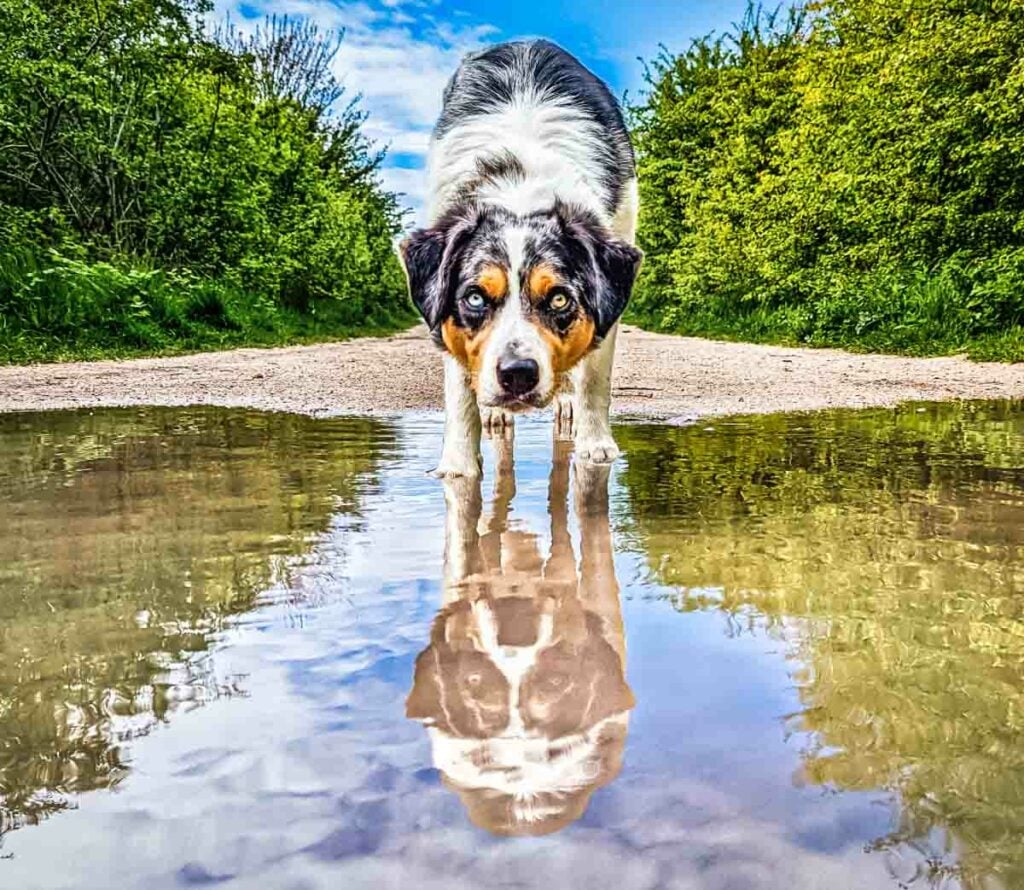
Walking And Exercising Dogs On Hot Days
As a hiker and walker I still want to get out and explore the outdoors, especially so in summer. Also, having a border collie that demands plenty of exercise, I cannot simply stop and stay inside as that would drive me and the dogs all mad.
Some tips for walking dogs on hot days include:
- Do your walking earlier and later in the day when the sun is not as intense and it is cooler
- Avoid the midday sun
- Always have water with you for you and the dog
- Avoid letting the dog pull as the restriction on the airway stops the dog from cooling down with panting
- Do the footpad test on hot ground (More on that shortly…)
I myself get my big walks done really early so the temperatures are comfortable for both me and the dogs. If really hot, I take the opportunity to do more woodland walks in the shade, or riverside and canal walks where there is water access for the dogs.
If your dog enjoys swimming, then a riverside walk (in a safe part of river) can be great not just for getting outdoors but also for extra dog exercise.
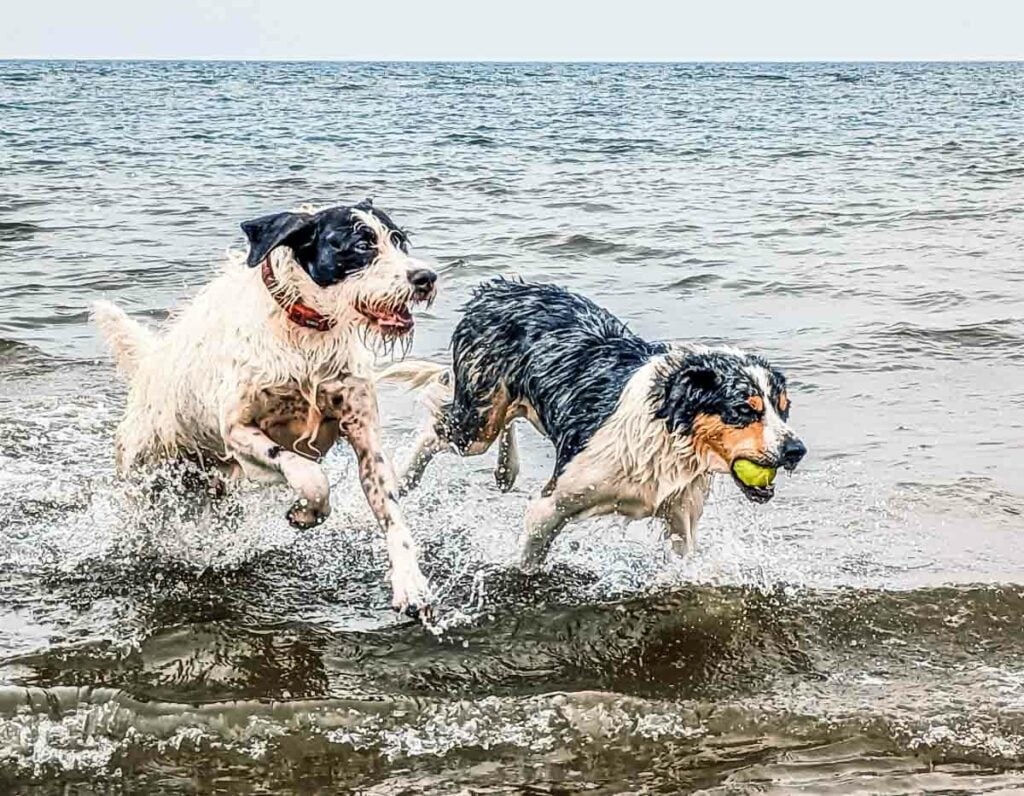
The Footpad Test
I touched on this when I wrote about dangers to dogs on the beach. Dogs do burn their paw pads quite easily.
We wear shoes but dogs are walking on their bare feet using these pads.
If you are walking on tarmac or sand then place your hand down and touch the ground. If you can’t bear the heat with your own skin for more than 5 seconds, then you can be sure that your dog will feel that heat on their pads.
Tips For At Home
Even at home there is much we can do to help keep our dogs cool and comfortable.
- If crating, keep the crate in a shaded cool area
- Always give access to water to drink, as per normal anyway
- Place ice cubes in their drinking water
- Get a paddling pool if you have space
- Place down damp towels for them to lie on
If you want to exercise the dogs brain, then try placing frozen treats in a Kong. Or perhaps make ice cubes where a small treat is frozen within the cube and they have to get to it by licking or chewing the ice.
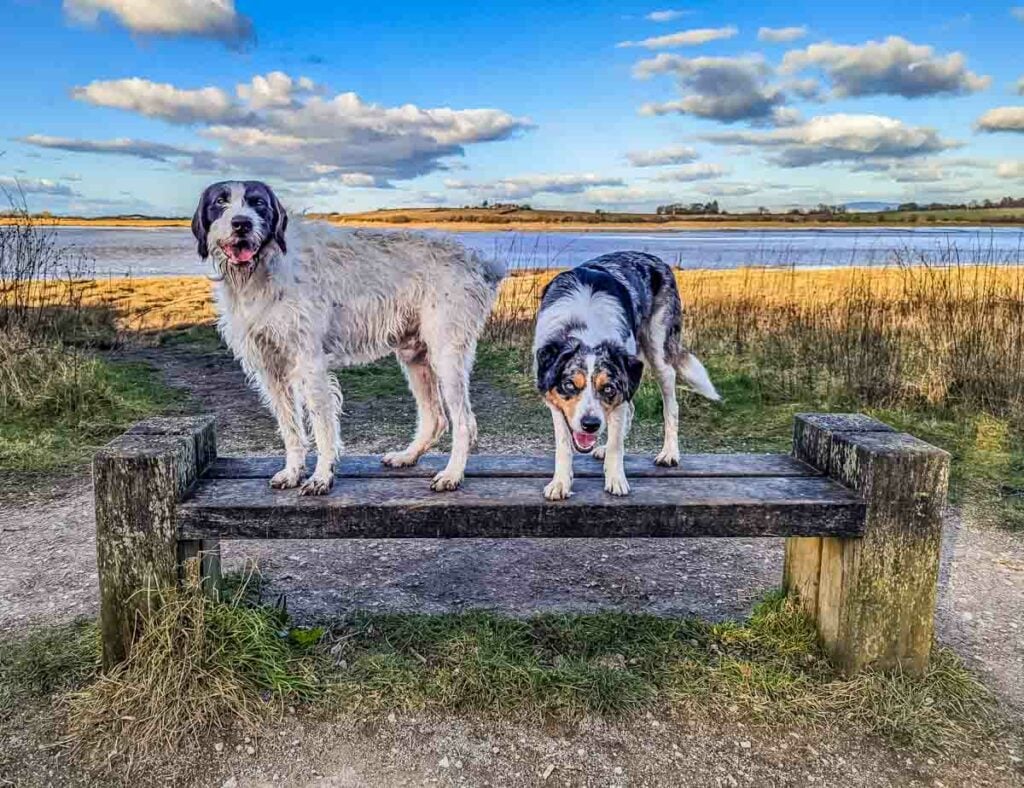
Conclusion
We love our dogs and they love us, and will follow us to the end of the earth. Sometimes we have to think for them in their devotion to us.
Enjoy the sunshine, enjoy the warm weather, enjoy your walks together. But please consider how your dogs will react to the temperature and intense sun wherever you go.

